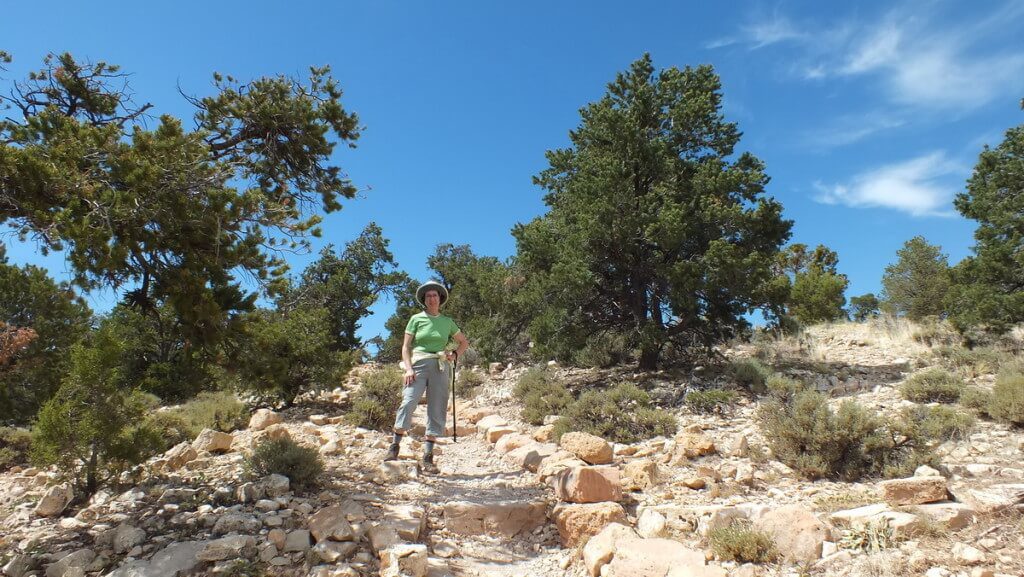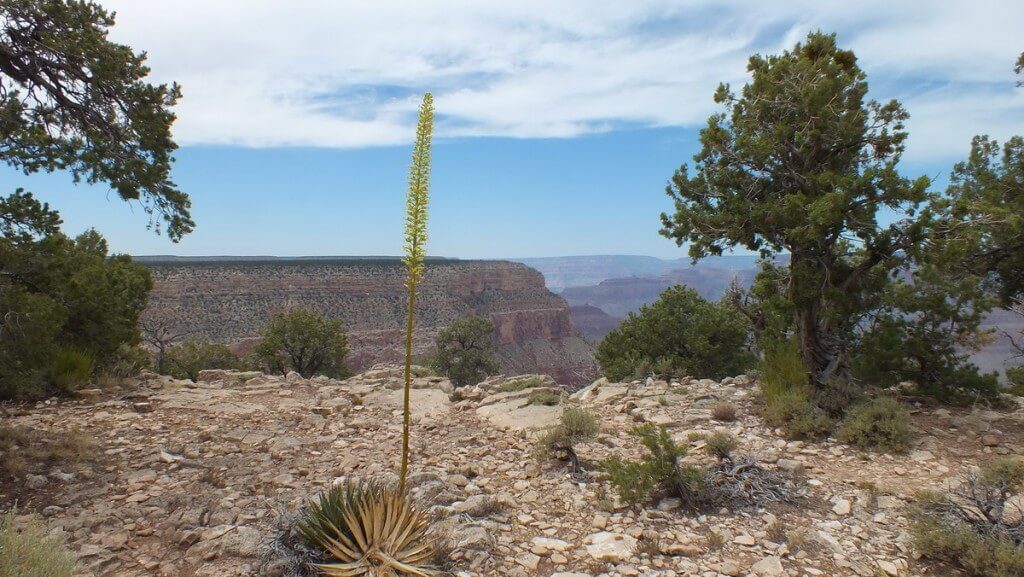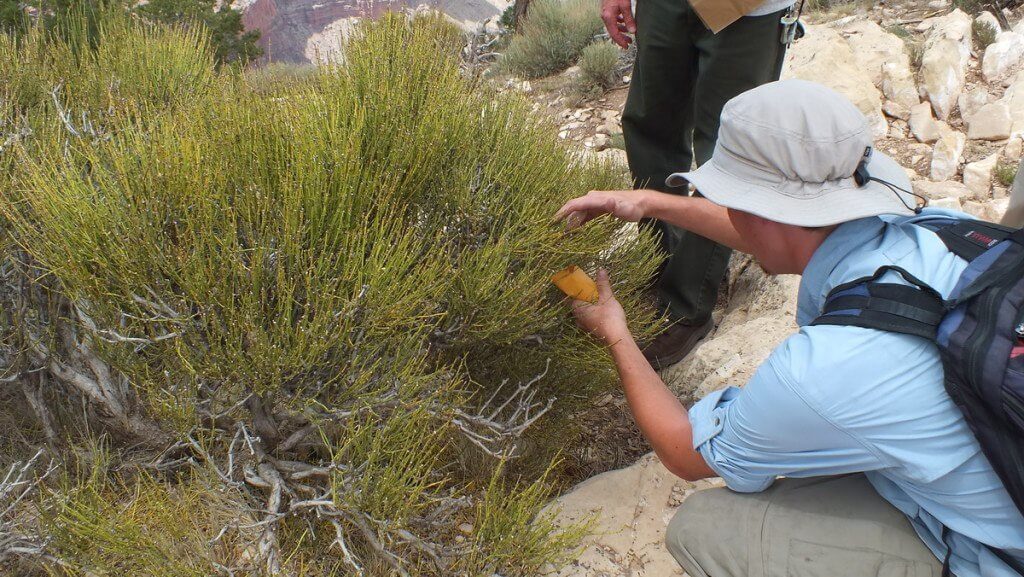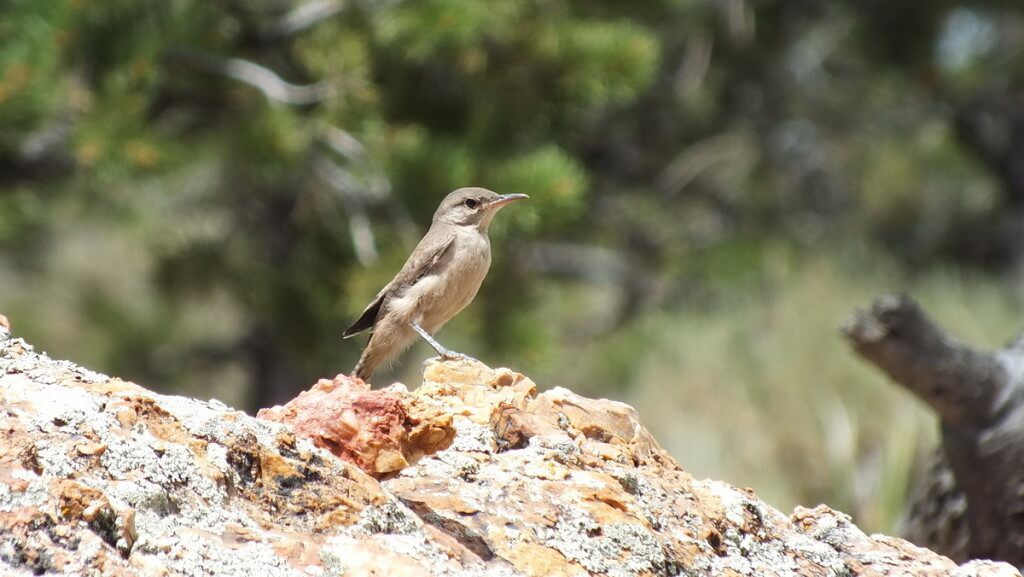Rock Wren at Grand Canyon National Park

On our first day in Grand Canyon National Park, after gaining a bird’s eye view of the spectacular world-famous canyon from a helicopter, we set off to explore the South Rim trails. In the afternoon, we caught a shuttle bus to the extreme western end of the trail at Hermit’s Rest. An impromptu exploration below Hermit’s Rest Lookout turned up a fleeting glimpse of this Rock Wren.
Hermit’s Rest is a humble stone building designed so that it appears to sprout from the earth itself. At one time, it served as a way station for tourists headed to Hermit Camp, a luxury campsite once operated by the railroad and found at the 7-mile mark along Hermit Trail.
About one-quarter mile (0.4 km) below Hermit’s Rest is the trailhead for Hermit Trail, which leads to the Colorado River. It was too late in the day to undertake the full hike, but Bob and I ventured along that first section.
Impressively tall spikes of Utah Agave had us wandering off the trail in order to check out the pretty yellow blossoms. Utah Agave plants bloom only once every 15 to 25 years, and when ready to produce flowers, a plant sends up a wooden stalk from its spiky base.
Yellow blossoms sprout all along the wooden stalk that can reach 14 feet (4.2 m) in height. When the flowers fade, the plant dies.
What a delight to happen upon a Park Botanist, David, at work with his assistant there along the approach to Hermit Trail.
Interestingly, they were collecting seeds from Mormon Tea plants to help populate their native plants garden. David explained that efforts are being made to restore native plants in Grand Canyon National Park because invasive species are crowding out native plants more noticeably in recent years.
Mormon Tea plants are fascinating because, once grown, they remain exactly the same for up to 500 years. Early Mormon settlers and Native Americans used the plants for medicinal purposes. After Bob and I assisted David in collecting some of the seeds, we left he and his assistant to their work.
The terrain was very dry, sandy and rocky, not to mention steep, but given that this was our first bit of exploration in the Park, we were intrigued by the landscape and keen to find any type of animal life.
I just happened to turn a backward glance from whence we came, and there, on a lichen-encrusted boulder sat this prim Rock Wren. The male Rock Wrens are known for their repertoire of melodious birdsong, but sadly, we never got to hear a single cheerful chirp.
The habitat was perfect for this species of bird because Rock Wrens prefer rocky slopes in arid locations where piles of boulders often are utilized for nesting locations. Rock Wrens forage on the ground where they use their long, slightly curved beak to reach under loose stones and pebbles for insects and spiders, but crevices in rocks and low tangles of vegetation also harbour the creatures that a Rock Wren feeds upon.
Rock Wrens do not require water to drink, a characteristic that allows them to thrive where other birds might not. It is from their diet that Rock Wrens acquire all the moisture their bodies require. Bob and I had time for a few quick shots of this particular bird, and then the Rock Wren was gone. We, ourselves, decided to return to Hermit’s Rest and make our way back to Maswik Lodge. Our first day had been a good one!
Frame To Frame – Bob and Jean












